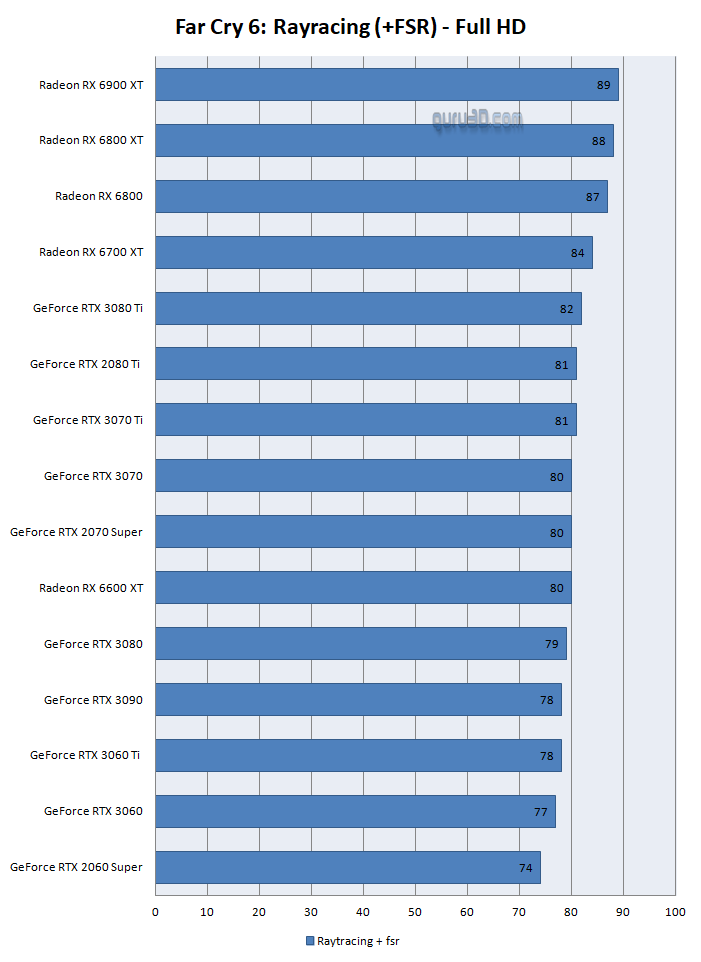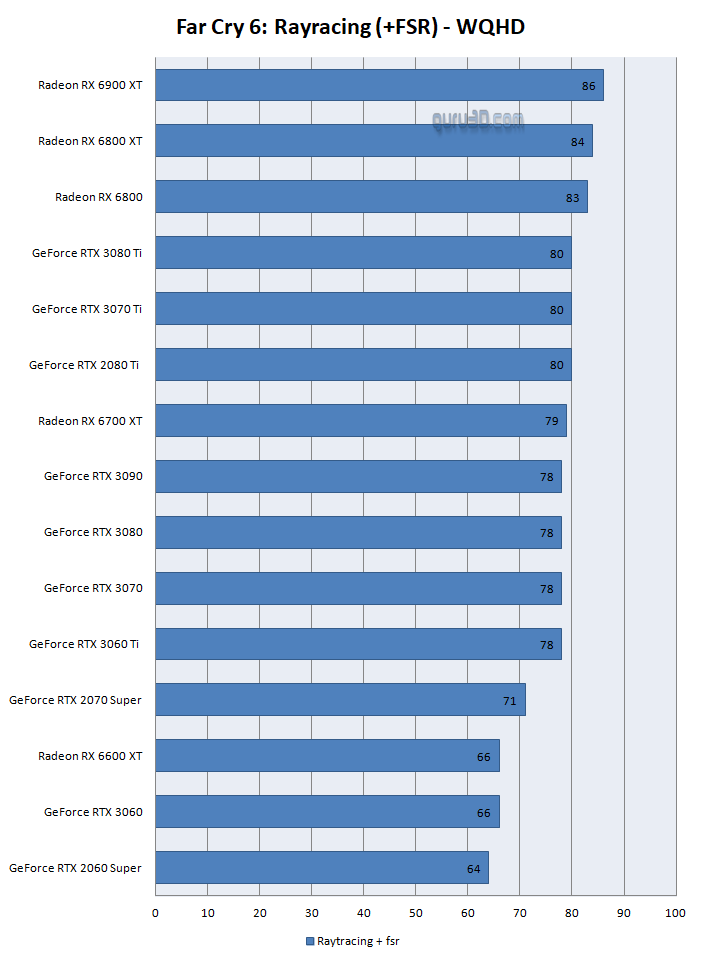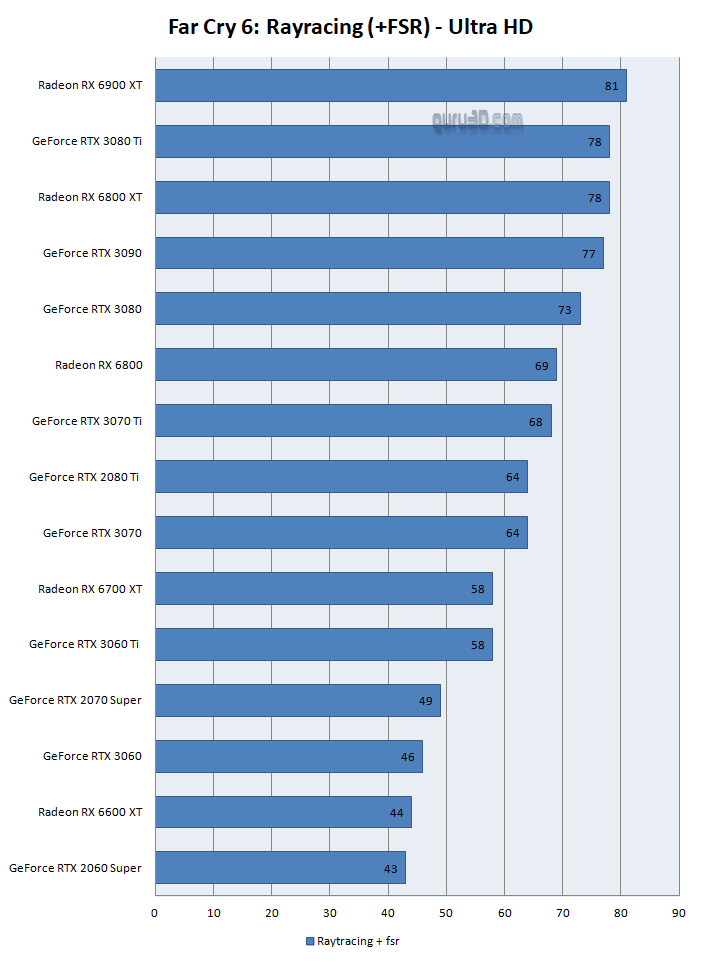Raytracing + FSR performance
FideltyFX Super Resolution?
Over time AMD's most significant deficit was that they do not have a solution at hand that matches DLSS from NVIDIA. NVIDIA wins every, and each time a game adds DLSS. NVIDIA did that very clever; they added Tensor cores in hardware on NVIDIA's RTX series over two years ago, which will always work out better for NVIDIA. So here we are; a few years later, AMD had decided not to implement a hardware solution as NVIDIA does. As a result of negative feedback, they needed to develop all kinds of ominous ideas to answer the lack of that feature. AMD presented an 'answer' towards NVIDIA's DLSS and unveiled its FidelityFX Super Resolution. Nowhere in AMD's documentation though AMD mentions DLSS, as they know, they're not even in the same or similar ballpark. Where DLSS is a deep learning technique that uses artificial intelligence to improve rendered frames, FidelityFX Super Resolution is merely an algorithmic spatial scaler. FSR does not use any machine learning or inference. FidelityFX Super Resolution in its 'Ultra Quality' mode certainly looks okay, but there's bound to be a reduction in the visual quality of the games. In AMD's defense, you can argue that DLSS also showed minor image deterioration in the early stages of the technology. The technology allows you to choose from four presets performance, balanced, quality, and ultra quality mode.
We apply FSR Ultra Quality combined with raytracing (Shadows and reflections enabled). FSR uses a common and fixed supersampling technique with one upscaling and one sharpening pass. The end results however are pretty good, for both brands.
Yeah, AMD's secret sauce, FSR:




